Intro
Discover key facts about Roseola, a common childhood illness, including its symptoms, causes, and treatment options, to help parents understand this contagious viral infection and its effects on infants and young children.
Roseola is a common viral infection that affects millions of people worldwide, particularly children. Despite its prevalence, many people are unaware of the key facts surrounding this condition. Understanding roseola is crucial for recognizing its symptoms, seeking proper treatment, and preventing its spread. In this article, we will delve into six essential facts about roseola, exploring its causes, symptoms, treatment options, and prevention strategies.
The importance of understanding roseola cannot be overstated, as it can lead to severe complications if left untreated. Moreover, recognizing the signs and symptoms of roseola can help parents and caregivers provide timely and effective care, reducing the risk of long-term health consequences. As we explore the world of roseola, we will examine the latest research and expert opinions, providing readers with a comprehensive guide to this viral infection.
Roseola is often misunderstood, and its symptoms can be mistaken for other conditions. However, by educating ourselves about this viral infection, we can better navigate the complexities of diagnosis and treatment. Whether you are a concerned parent, a healthcare professional, or simply an individual looking to expand your knowledge, this article aims to provide a detailed and informative exploration of roseola. From its causes and symptoms to its treatment and prevention, we will leave no stone unturned in our quest to understand this common yet often misunderstood condition.
What is Roseola?
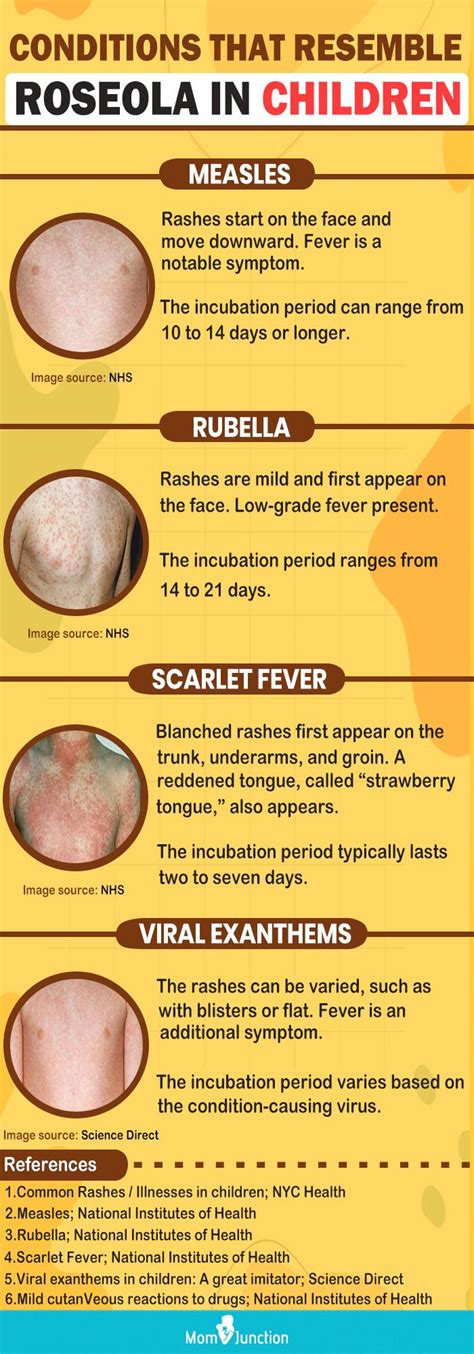
Cause and Transmission
Roseola is caused by the HHV-6 or HHV-7 virus, which is highly contagious and can be spread through respiratory droplets, such as those produced by coughing or sneezing. The virus can also be transmitted through contact with infected saliva, mucus, or other bodily fluids. Roseola is often spread in childcare settings, schools, and other areas where people are in close proximity to one another.Symptoms of Roseola
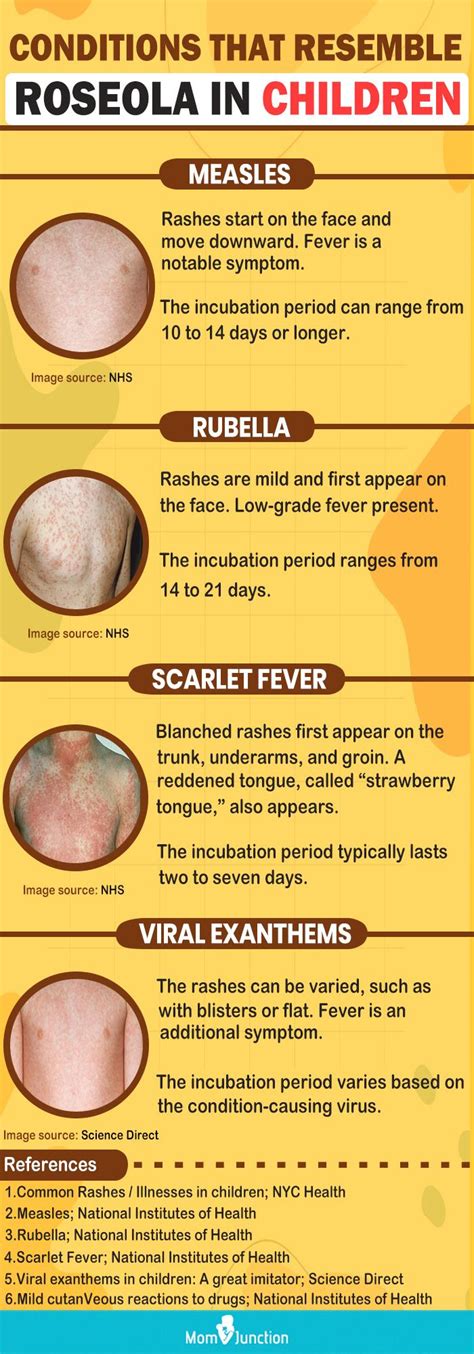
Diagnosis and Treatment
Diagnosing roseola can be challenging, as the symptoms are similar to those of other viral infections. A physical examination and medical history are typically used to diagnose roseola, although blood tests may also be performed to rule out other conditions. There is no specific treatment for roseola, although symptoms can be managed with over-the-counter medications, such as acetaminophen or ibuprofen, to reduce fever and relieve discomfort.Complications of Roseola
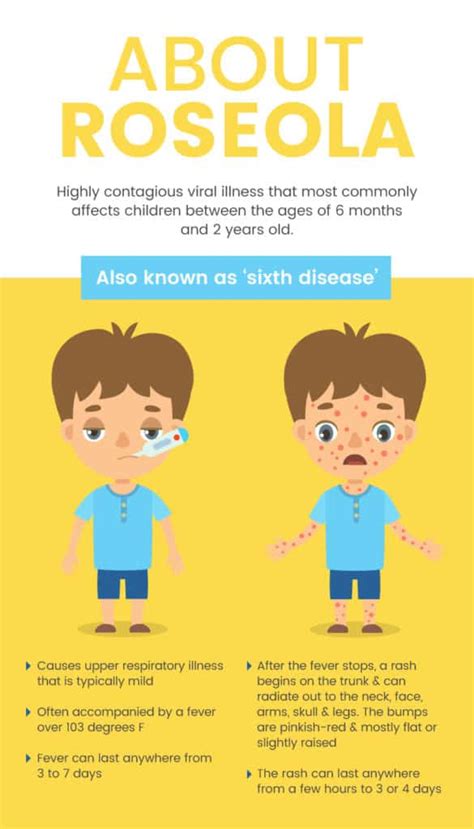
Prevention and Prevention Strategies
Preventing the spread of roseola is crucial, particularly in childcare settings and schools. Some strategies for preventing the spread of roseola include: * Practicing good hygiene, such as washing hands frequently and thoroughly * Avoiding close contact with individuals who have roseola * Staying home from school or work if symptoms are present * Avoiding sharing food, drinks, or utensils with othersTreatment Options for Roseola
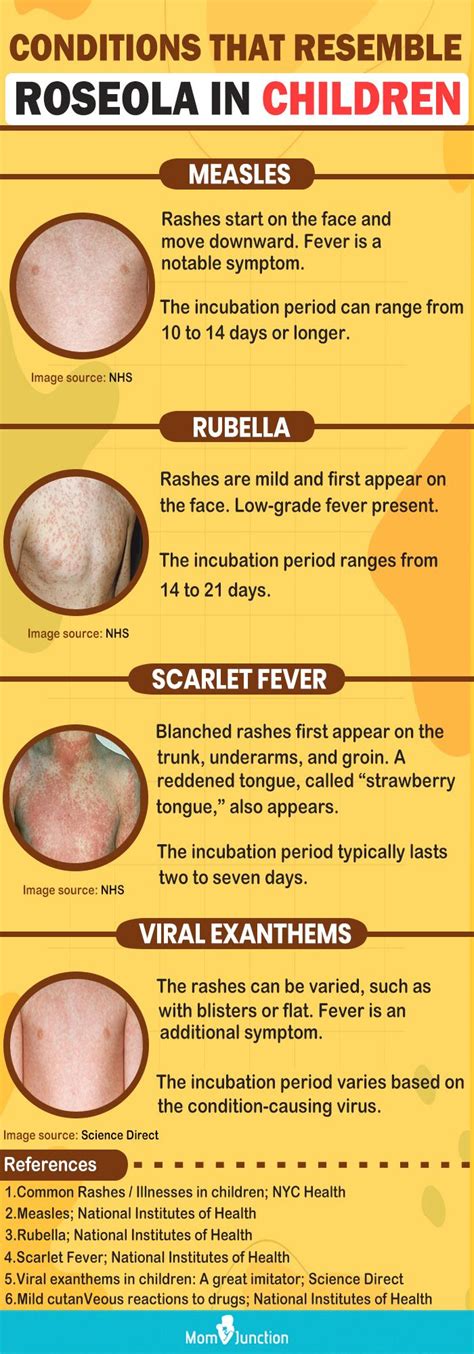
Home Remedies for Roseola
In addition to medical treatment, there are several home remedies that can help alleviate the symptoms of roseola. These may include: * Using a humidifier to add moisture to the air and relieve congestion * Applying a cool compress to the forehead or neck to reduce fever * Offering plenty of fluids, such as water or electrolyte-rich beverages, to stay hydrated * Using a fan or air conditioner to keep the room cool and reduce discomfortRecovery and Prognosis

Long-term Effects of Roseola
While roseola is typically a short-term condition, it can have long-term effects in some cases. For example, individuals who have had roseola may be at increased risk of developing certain conditions, such as multiple sclerosis or chronic fatigue syndrome. However, more research is needed to fully understand the potential long-term effects of roseola.Roseola in Adults
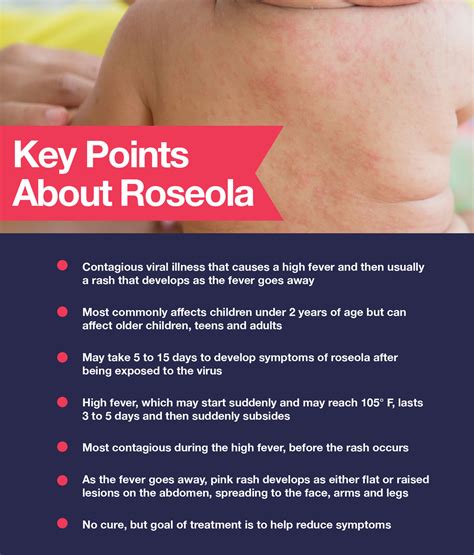
Pregnancy and Roseola
If you are pregnant and have been exposed to roseola, it is essential to seek medical attention immediately. While roseola is typically not a significant concern for pregnant women, it can increase the risk of complications, such as miscarriage or premature birth. Your healthcare provider can provide guidance on managing symptoms and reducing the risk of complications.What are the symptoms of roseola?
+The symptoms of roseola include high fever, rash, irritability, loss of appetite, runny nose, and cough.
How is roseola diagnosed?
+Roseola is typically diagnosed through a physical examination and medical history, although blood tests may also be performed to rule out other conditions.
Can roseola be prevented?
+While there is no surefire way to prevent roseola, practicing good hygiene, avoiding close contact with individuals who have roseola, and staying home from school or work if symptoms are present can help reduce the risk of transmission.
What are the complications of roseola?
+The complications of roseola can include febrile seizures, encephalitis, meningitis, and secondary bacterial infections.
How long does it take to recover from roseola?
+Most individuals recover from roseola within 3-5 days, although some may experience lingering symptoms or complications.
As we conclude our exploration of roseola, we hope that you have gained a deeper understanding of this common yet often misunderstood condition. Whether you are a parent, healthcare professional, or simply an individual looking to expand your knowledge, we encourage you to share this article with others and join the conversation about roseola. By working together, we can raise awareness about this viral infection and provide support to those affected by it. If you have any questions or comments, please do not hesitate to reach out – we would love to hear from you and continue the discussion about roseola.
